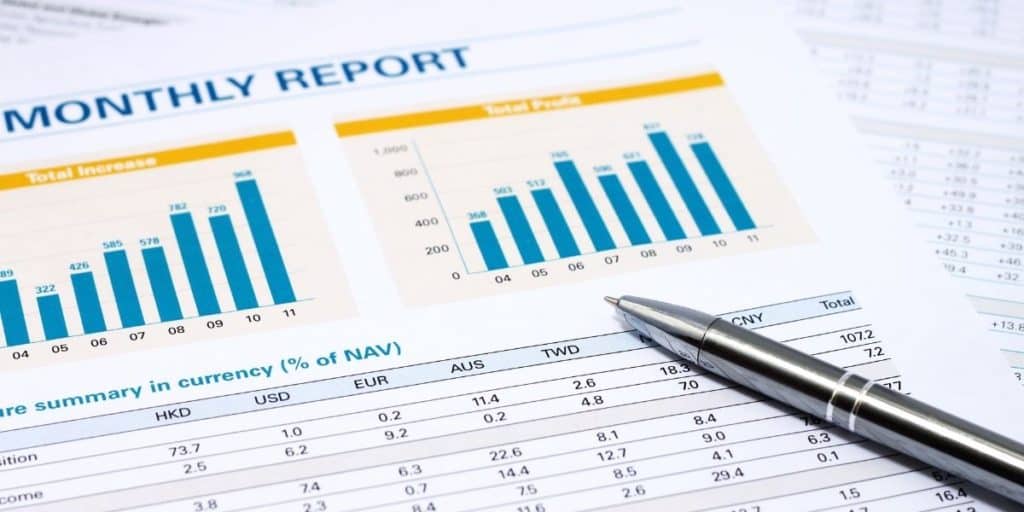Determining how often to invest can be quite a challenge when you have bills and other financial obligations to consider. But as much of a dilemma as that decision is, you need to get it right because your investment frequency can affect your returns and your overall success as an investor.
You should invest monthly. If this isn’t convenient, determine your investment frequency based on:
- Your pay cycle.
- The paperwork associated with each investment.
- The cost of investing.
- Your investment term, whether it is long or short term.
- The portion of your income allocated to investment.
Read on to learn the general rule on how often to invest and the factors to consider when setting your investment frequency.
IMPORTANT SIDENOTE: I surveyed 1500+ traders to understand how social trading impacted their trading outcomes. The results shocked my belief system! Read my latest article: ‘Exploring Social Trading: Community, Profit, and Collaboration’ for my in-depth findings through the data collected from this survey!
Table of Contents
Why Monthly Investing Is the Best Option?
The consensus is that you should plan to invest at least once a month. This investing frequency is ideal for salaried individuals because it aligns investment with paydays when most people make financial decisions.

Investing monthly as a salaried individual also makes it easier to stay consistent. Since you know how much you make each month, you can work out how much money goes into investment in advance and set up an Automatic Investment Plan (AIP).
With an AIP, you set aside a certain amount of money to be automatically deducted from your paycheck every month. These funds go to your investment account, where they’re put to work through index funds, stocks, or other pre-determined investments.
This kind of setup provides several benefits:
- If you make automatic investments via an employer-sponsored benefit program, you save on fees and transaction costs.
- It instills a healthy personal finance habit of treating investments as another item on your budget, preventing you from spending all your disposable income.
- It helps you invest more money in the long run than investing varying amounts at irregular intervals.
As with many other investment rules, there are exceptions to the general rule of investing monthly.
For instance, if you get paid more frequently than monthly or irregularly, such as on a contractual basis where the contract duration varies from one project to another, it might not make sense to invest every month.
Does this mean that you won’t achieve your investment goals? Not necessarily, provided you stay consistent with your investments. So then, how do you determine the ideal investment frequency for your specific financial situation?
Let’s find out in the next section.
Determining How Often To Invest
The factors that you need to consider when determining how often to invest include:
- Your pay cycle.
- The paperwork associated with each new investment.
- The cost of making an investment.
- Your investment term.
- The amount of money you can set aside for investment.
Let’s take a deeper look at how each of these factors affects your investment frequency.
Your Pay Cycle
Your pay cycle refers to how often you earn your income. For an individual with a formal job, this is usually on a monthly or biweekly basis. But for gig workers, business people, and other nonsalaried individuals, the pay cycle can be anything from bi-weekly to annual.
Your pay cycle is arguably the most crucial determinant of how often to invest. Ideally, you want to match your investment frequency to your pay cycle for the sake of consistency and automating your investment cycle.
But what if your pay cycle isn’t regular?
You’ll first need to learn how to budget on a variable income. Doing that will improve how you manage your finances in general and give you a clearer idea of how much you can afford to allocate to investment every time you get that paycheck.
Once you estimate how much you can set aside per paycheck, you can add consistency to your investment cycle by setting an annual target.
To illustrate the importance of such a target, here’s a hypothetical example.
Suppose you get irregular paychecks of $20,000 in January, $10,000 in March, and $70,000 in September throughout year X. With an annual target of at least $20,000, you can work backward to determine how much of these paychecks to invest in your favorite stocks and index funds.
For instance, you can decide to set aside $5,000, $2,000, and $13,000 from your January, March, and September paychecks, respectively. This way, you hit your annual investment target without stretching your finances thin.
Notice that while you’ve only invested three times a year in this example, that doesn’t mean you’re not consistent. Provided you hit your target every year, you’re still investing consistently if you look at the bigger picture.
The Paperwork Associated With Each New Investment
Part of being a responsible investor is keeping records. It’s how you track where your money is going, how your portfolio is doing, and so on. Generally, investing more frequently means more entries to be made, which translates to more paperwork to track.
So if reducing paperwork is a priority, you’ll be better off investing less often.
The Cost of Making An Investment
Many brokerages charge a fee for every new investment you make. While these charges may look relatively small, they can snowball into significant figures with time and frequent stock or index fund purchases.
If your brokerage charges fees for every new stock or index fund you purchase, you’ll want to keep the frequency of investments low.
For example, if you earn a weekly income and your brokerage levies such charges, you might be better off pooling together your designated weekly investment money and investing at the end of the month.
Your Investment Term
As a long-term investor, it won’t make much of a difference in your returns whether you invest weekly, bi-weekly, monthly, and so on. However, the same can’t be said for short-term investors.
The latter investor category is better off investing as frequently as their financial situation allows.
According to Schwab, investing often harnesses the power of compound growth more effectively. So as a short-term investor, you’ll want to invest as frequently as possible to make the most of the limited time you have to grow your returns.
The Amount of Money You Can Set Aside for Investment
Through budgeting, most investors can determine the amount of money they can afford to set aside for investment every month (or whatever your pay cycle is). Depending on the size of this figure and whether your broker has enacted a minimum investment, you might have to rethink your investment frequency.
How come? Let’s look at an example.
Let’s say that you can only afford to allocate $100 every month to invest. However, your broker’s minimum investment is $200.
In this case, it wouldn’t be possible to invest monthly without messing up your budget. To stay on budget, you’ll need to pull together the current month’s $100 with the next month’s $100 to meet the $200 investment threshold.
So instead of investing every month, you’ll have to reduce the frequency to once every two months.
Try a Frequency Calculator If You’re Still Unsure
Ideally, your investment frequency should be a function of the factors we’ve just looked at. However, working out the optimum frequency can be tricky when the effect of some of these factors is contradictory. It’s even trickier when you don’t know which factors to prioritize.
If you’re stuck, consider using an Investment Frequency Calculator. All you have to do is key in a few figures to get an estimate of how much and how often to invest.
Author’s Recommendations: Top Trading and Investment Resources To Consider
Before concluding this article, I wanted to share few trading and investment resources that I have vetted, with the help of 50+ consistently profitable traders, for you. I am confident that you will greatly benefit in your trading journey by considering one or more of these resources.
- Roadmap to Becoming a Consistently Profitable Trader: I surveyed 5000+ traders (and interviewed 50+ profitable traders) to create the best possible step by step trading guide for you. Read my article: ‘7 Proven Steps To Profitable Trading’ to learn about my findings from surveying 5000+ traders, and to learn how these learnings can be leveraged to your advantage.
- Best Broker For Trading Success: I reviewed 15+ brokers and discussed my findings with 50+ consistently profitable traders. Post all that assessment, the best all round broker that our collective minds picked was M1 Finance. If you are looking to open a brokerage account, choose M1 Finance. You just cannot go wrong with it! Click Here To Sign Up for M1 Finance Today!
- Best Trading Courses You Can Take For Free (or at extremely low cost): I reviewed 30+ trading courses to recommend you the best resource, and found Trading Strategies in Emerging Markets Specialization on Coursera to beat every other course on the market. Plus, if you complete this course within 7 days, it will cost you nothing and will be absolutely free! Click Here To Sign Up Today! (If you don’t find this course valuable, you can cancel anytime within the 7 days trial period and pay nothing.)
- Best Passive Investment Platform For Exponential (Potentially) Returns: By enabling passive investments into a Bitcoin ETF, Acorns gives you the best opportunity to make exponential returns on your passive investments. Plus, Acorns is currently offering a $15 bonus for simply singing up to their platform – so that is one opportunity you don’t want to miss! (assuming you are interested in this platform). Click Here To Get $15 Bonus By Signing Up For Acorns Today! (It will take you less than 5 mins to sign up, and it is totally worth it.)

Conclusion
Hopefully, you have a clearer idea of how often you need to invest than you did at the start of this post.
If investing monthly like most people doesn’t seem feasible, considering your pay cycle, investment term, the paperwork and costs associated with new investments, and the amount you can afford to set aside for investment should clear things up as far as investment frequency is concerned.
If weighing these factors doesn’t cut it, an online frequency calculator should be your next option. And if nothing works, it might be time to talk to a financial advisor.
BEFORE YOU GO: Don’t forget to check out my latest article – ‘Exploring Social Trading: Community, Profit, and Collaboration’. I surveyed 1500+ traders to identify the impact social trading can have on your trading performance, and shared all my findings in this article. No matter where you are in your trading journey today, I am confident that you will find this article helpful!
Affiliate Disclosure: We participate in several affiliate programs and may be compensated if you make a purchase using our referral link, at no additional cost to you. You can, however, trust the integrity of our recommendation. Affiliate programs exist even for products that we are not recommending. We only choose to recommend you the products that we actually believe in.
Recent Posts
Exploring Social Trading: Community, Profit, and Collaboration
Have you ever wondered about the potential of social trading? Well, that curiosity led me on a fascinating journey of surveying over 1500 traders. The aim? To understand if being part of a trading...
Ah, wine investment! A tantalizing topic that piques the curiosity of many. A complex, yet alluring world where passions and profits intertwine. But, is it a good idea? In this article, we'll uncork...
